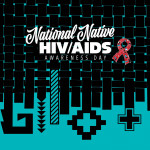"These are the choices we are left with. If a movie theater you can duck into in the middle of the day was one of the small raptures of the modern urban landscape, all around us were the same sorts of existential conveniences. Those corner bakeries with the string-wrapped boxes where you could get a respectable layer cake on the way to someone’s dinner party. A kosher butcher where you could pick up the lamb shank you realized you forgot just minutes before the family was due for Passover dinner. Decent Chinese food for a Friday night at home in front of the television.
Oppenheimer Meats was a butcher shop in our neighborhood whose founder had reportedly fled Nazi Germany and brought his business down from Washington Heights sometime in the Forties. A large, imposing man with a bristling mustache, he would strut behind his counter like a Prussian field marshal, but he hired people of every color from the neighborhood and left them to run the shop when he retired. Then a few years ago the rent was tripled, and out it went. Two streets over was a whole row of enterprises: an excellent fish store, a pet shop, a Mexican restaurant named for Frida Kahlo, and a laundromat we used to call the St. Launder Center, thanks to how part of its name had been torn out of its awning. Then they were all gone too, without warning. Soon after I ran into Shirley, doughty little Asian abbess of the St. Launder Center. She said the landlord had upped the rent from a hefty seven thousand a month to twenty one, which is a hell of a lot of laundry. [Ditto, my East Village Plantworks, when its rent rose overnight from 6K to 30.]
These stores like so many others in my neighborhood have not been replaced. They are simply . . . gone. In an informal survey of Broadway, from 93rd to 103rd, I recently counted twenty-four vacant storefronts—many of them very large spaces, enough to account for roughly a third of the street frontage. Nearly all of them have been empty now for months, or even years. [The same could be said for great swaths of Avenue B, Clinton above Rivington, of course the now iconic hollowing out of the westward reaches of Bleecker Street, and on and on.]
In the evening I sit at my desk in a little space in this building cubbyholed with other little spaces and held together by what was once described as ’a hundred years of spit and dust’ and feel as though I were poised over the center of the world. Beneath me I can hear a hive of dinnertime conversations carried on in half a dozen languages, smell cooking that came from all over the world, hear someone ringing a gong and repeating a Buddhist chant.
It is through all these interactions, multiplied a million times, that a truly great city is made. The street life—the warrens of little shops and businesses that once sustained our neighborhood in the sort of ’exuberant diversity’ that Jane Jacobs considered a prerequisite for a successful city—is being eradicated as well: the botanica on West 51st Street that my sister-in-law always visited to buy her healing herbs when she was in town; the Indian spice shop with the protective elephant-headed idol of Ganesh mounted outside. Almost everything neighborhoodly has disappeared.
As New York enters the third decade of the twenty-first century, it is in imminent danger of becoming something it has never been before: unremarkable. It is approaching a state where it is no longer a significant cultural entity but the world’s largest gated community, with a few cupcake shops here and there.
I have witnessed all the periods of boom and bust since the city’s supposed nadir in 1975, but this is something new and potentially insoluble: the systematic, wholesale transformation of New York into a reserve of the obscenely wealthy and the barely here—a place increasingly devoid of the idiosyncrasy, the complexity, the opportunity, and the roiling excitement that make a city great. For the first time in its history, New York is, well, boring."
Of course, there have been many elegies to our adopted hometown over the years. We could probably perform them in a tag team style staged reading, completely from memory: Dame Didion’s “broken golden rhythm,” F. Scott’s “Pandora’s box crowning error,” Elwyn’s “steel and stone riddle,” but I can think of none as urgent as Mr. Baker’s. You will accuse me of nostalgia, but I believe it to be more than that. And the moment I discovered Kevin’s exhaustively researched and wind knocking essay (a month or so after the fact, but that seems to be my MO these days), I had to do something with it. Set it to music? No, for each it would evoke its on personal soundtrack. Have it read at my memorial? It is on its own a memorial—and many of ours. Who would have imagined at the time that we were living the last years worth doing so in our decrepit, impetuous metropolis? Nadir to apogee. On occasion I make the now three hour pilgrimage into town where I walk in reverence among its tombs. Our not so magically vanishing New York.
Read Kevin Baker’s complete essay at its source: Death of a Once Great City
Get involved with (or gift to) the Elizabeth Street Garden defense fund. Or that of Merchant’s House.
See also: Michael Greenberg in last summer’s NYReview; and the (almost) timeless essays, “Goodbye To All That”, “My Lost City”; “Here Is New York”
Mike Barr, a long ago Poz Senior Contributing Editor and founding member of and scribe for the Treatment Action Group (TAG), is a functional medicine practitioner, acupuncturist and herbalist in NYC. Reach out to him here.








Comments
Comments